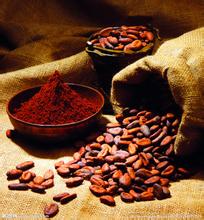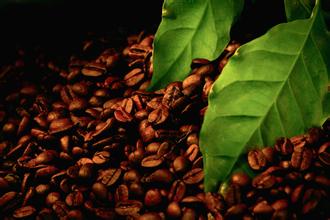Introduction to the baking degree of roasted coffee beans
Coffee roasting
Freshly roasted coffee beans emit carbon dioxide, making the pressure in the package higher than an atmospheric pressure, which contributes to the fusion of aromas and oils, making it easy to extract all the aromatic substances inside the beans.
The common one-way breather valve on coffee bean bags is used to discharge excess carbon dioxide to prevent the bean bags from being broken by carbon dioxide. However, if the coffee beans no longer emit carbon dioxide, the carbon dioxide in the bag will be lost through the breathable valve, resulting in a state of pressure-free preservation, stuffing the coffee beans that may have wonderful aroma and taste, and accelerating the deterioration of the coffee beans.
Roasted coffee beans are not the best for instant grinding and brewing. Because raw beans are not fit to drink within 72 hours of baking. During this period, coffee beans will release a lot of carbon dioxide, which is a ripening process. Generally speaking, the coffee beans of 10-45 days after roasting are the best flavor period for coffee, and the color and flavor are at their best, and the flavor will be lost for a long time. At the same time, in order to let the freshly roasted coffee beans, the carbon dioxide released by the coffee beans can be discharged without entering the air to accelerate oxidation, the roasted coffee needs to be packaged with a special one-way valve bag. In addition, it should be noted that it is best to finish the coffee beans in Kaifeng within a month.
Because during the roasting process of coffee beans, a large amount of carbon dioxide is produced inside the beans due to the thermal decomposition of carbohydrates, which is constantly released during the baking process, but part of the carbon dioxide is still left inside the beans after baking. In fact, it is beneficial, because after the beans are roasted, they will continue to release carbon dioxide, which helps to isolate oxygen, delay the oxidation of coffee beans, and keep the flavor of beans from being lost.
I usually have a cup test immediately after baking, but if I officially sell it to the customer, I still have to leave it open for about 12 hours.
If you are baking yourself, then put it for a while before drinking. If you buy it, ask the store when the pot will be baked. The professional question is: have you raised beans?

Important Notice :
前街咖啡 FrontStreet Coffee has moved to new addredd:
FrontStreet Coffee Address: 315,Donghua East Road,GuangZhou
Tel:020 38364473
- Prev

The Origin of American Coffee how many words are there about the origin of coffee
American coffee simple American coffee is divided into two categories: the east coast of the United States is stronger than the west coast, and the south is stronger than the north. Ethnically speaking, immigrants from southern Europe and Latinos prefer strong coffee to those from Britain, Germany and northern Europe. Americans are dismissive of all kinds of exquisite coffee made by Europeans. Americans drink coffee freely, and coffee goes deep into their lives.
- Next

Normal latte coffee grinding fine common grinding thickness diagram introduction
1, soak the cup in hot water (warm cup), so that its temperature rises, and then pour out the excess water use. 2. After grinding the deep-roasted coffee beans, pour the coffee powder into the filler, flatten the coffee powder with a press bar, and then buckle the filler to the espresso machine to extract ESPRESSO(the ratio of coffee and fresh milk is 1:1). 3. Take appropriate amount of milk,
Related
- Beginners will see the "Coffee pull flower" guide!
- What is the difference between ice blog purified milk and ordinary milk coffee?
- Why is the Philippines the largest producer of crops in Liberia?
- For coffee extraction, should the fine powder be retained?
- How does extracted espresso fill pressed powder? How much strength does it take to press the powder?
- How to make jasmine cold extract coffee? Is the jasmine + latte good?
- Will this little toy really make the coffee taste better? How does Lily Drip affect coffee extraction?
- Will the action of slapping the filter cup also affect coffee extraction?
- What's the difference between powder-to-water ratio and powder-to-liquid ratio?
- What is the Ethiopian local species? What does it have to do with Heirloom native species?

